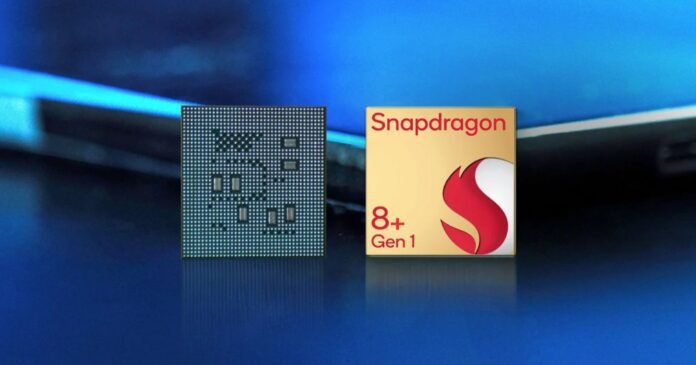Qualcomm continues to push on the accelerator and does so by introducing two new mobile platforms that aim to further raise the bar in the high-end of the market: Snapdragon 8+ Gen 1 and Snapdragon 7 Gen 1. The first was certainly more awaited, the San Diego house usually offers an enhanced and slightly revised version of the best of its SoCs in the middle of the year and so it was also in this round.
More surprisingly then comes Snapdragon 7 Gen 1 which instead aims to offer excellent features even at the medium-high end of the market, in short, the “old” generation SD7xx which is renamed and obviously gains in power. Let’s see them in detail, also because both will arrive on the market as early as this quarter which is ending, which means that they will soon be available to buyers with new arrivals that are still unpublished.
SNAPDRAGON 8+ GEN 1
So much power and therefore focus that inevitably also shifts to gaming, so much so that we talk about the integrated Snapdragon Elite Gaming suite of functions. The GPU is the same Adreno 730 of the “original” model but with a few more tricks that will improve performance by about 10%, while reducing consumption by 30%. Same percentages of improvement are attested for the CPU, also here in the face of a slightly higher operating frequency (3.2 GHz against 3.0 GHz of the base model).
Reducing consumption by a third is certainly no joke, beyond the performance differences (difficult to quantify in everyday use) this could be one of the most interesting factors of the Snapdragon 8+ Gen 1 compared to the previous variant. For the rest, the SoC is practically unchanged, in short, that “monster” of power remains that allows you to capture videos in 8K HDR and simultaneously shoot 64MP images (thanks to the three 18-bit ISPs) and guarantee the maximum possible connectivity on mobile . This is thanks to the already well-known Snapdragon X65 modem (5G, SA and NSA) and Fastconnect 6900 (WiFi 6 and 6E).
Many will use it from the third quarter of 2022among them: Asus (Rog), Black Shark, Honor, iQOO, Lenovo, Motorola, Nubia, OnePlus, Oppo, Realme, RedMagic, Redmi, Vivo, Xiaomi and ZTE.
TECHNICAL SPECIFICATIONS
- 4nm production process
- CPU: Kryo up to 3.2 GHz with 64-bit Arm Cortex-X2
- GPU: Adreno 730, HDR gaming, Vulkan 1.1 API
- Modem: Snapdragon X65 5G, 5G mmWave and sub-6 GHz, SA and NSA, downloads up to 10 Gbps
- Wifi: 6E and 6 (2.4 GHz, 5 GHz, 6 GHz) with Qualcomm FastConnect 6900
- Connectivity: Bluetooth 5.3 and USB 3.1
- Room: Triple 18-bit ISP, 8K HDR Video at 30fps, 4K at 120fps, HDR10 +, HDR10, HLG, Dolby Vision
- Audio: Qualcomm Aqstic codec (WCD9385)
- Refill: Quick Charge 5
- Memory: LP-DDR5 support up to 16GB at 3200MHz
SNAPDRAGON 7 GEN 1
The change of name also affects the medium-high range and does so bringing with it first-class characteristics. Let’s start for example with some of the Snapdragon Elite gaming functions, including the Adreno Frame Motion Engine which doubles the framerate and increases the quality of content without increasing consumption. Support for Quad HD + displays and amplified audio.
Here too we have a triple Spectra ISP that manages the entire photographic sector (but at 14-bit), so it will be possible to shoot simultaneously from three cameras or from a single one with a sensor up to 200 MP. A feature that until now had been available only to the top of the range. Here you can also record videos in HDR but at the maximum 4K resolution.
Here too the connectivity sector is more than complete, on the other hand Qualcomm is a leader and certainly does not want to disfigure: Snapdragon X62 5G and the same FastConnect 6900 module seen on the SD 8+ Gen 1 SoC which includes WiFi 6 and 6E and Bluetooth 5.3.
As you can see the differences between the two new solutions presented today are not so clear-cut, this confirms that the distance between so-called flagship smartphones and other ambitious mid-range smartphones is always shorter, often playing on the choice of materials, design and, above all, the choice of image sensors. Among the first to adopt it Qualcomm mentions Honor, Oppo and Xiaomi.
TECHNICAL SPECIFICATIONS
- 4nm production process
- CPU: Kryo up to 2.4 GHz 64-bit
- GPU: Adreno HDR gaming, Vulkan 1.1 API
- Modem: Snapdragon X62 5G, 5G mmWave and sub-6 GHz, SA and NSA, downloads up to 4.4 Gbps
- Wifi: 6E and 6 (2.4 GHz, 5 GHz, 6 GHz) with Qualcomm FastConnect 6900
- Connectivity: Bluetooth 5.3 and USB 3.1
- Room: Triple 14-bit ISP, 8K HDR Video at 30fps, 4K at 120fps, HDR10 +, HDR10, HLG, Dolby Vision
- Audio: Qualcomm Aqstic codec (WCD9385)
- Refill: Quick Charge 4+
- Memory: LP-DDR5 support up to 16GB at 3200MHz












